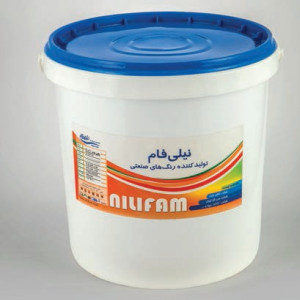| Mohandesin Shimiaie Va Rangsazi NiliFam Ray |

| Registration Date | 4 Jan 2020 |
| Revision Date | 4 Jan 2020 |
| Share |
Construction Masonry Materials
Thermal Insulation PaintThe product is made of water-based acrylic resin with porous mineral fillers and aluminum materials. Non-toxic Heat and sound resistance (high damping capacity) Low flammability and high moisture resistant Low thickness Suitable adhesion to carbon steel surfaces, stainless steel and anodized aluminum Cheap, easy to apply, fast drying
Insulating of different surfaces of construction and equipment is one way to prevent energy losses and thus reduce costs. On the other hand, it is important to prevent sound transmission in order to avoid disturbances by sounds created in the upper or lower rooms of buildings and industrial structures, as well as ships, trains and cars. In addition to using a high-density concrete ceiling or wall with insulators such as fiberglass or using rubber stabilizers to reduce thermal and sound losses, the use of insulating coatings is a novel approach. The thermal insulation paint reduces thermal conductivity and the sound insulation colors are designed to be applied with very low thickness, but the ability to exhaust a wide range of vibrations. Another great advantage of these types of coating is its low thickness and density, which makes the less dead load applied to the structure and occupy less space. This is a very important factor in shipbuilding and marine structures. Also, due to the elastomeric nature of resin coatings, they also play a protective role against atmospheric conditions. Today, with the development of nanoscale thermal insulation coatings on surfaces, it is possible to improve the prevention of energy dissipation to an acceptable level. On the other hand, the simultaneous prevention of sound transmission is the advantages of these coating due to the presence of nanoparticles in the structure. Nanoparticles play an insulator role by absorbing part of the radiation spectrum and reflecting sunlight, and deviates sound waves.
Addition of nano-plate to the paint improves the heat and sound resistance, dramatically. The mechanism of the performance of these coatings includes two phenomena, heat transfer and reflection of heat energy into the environment. In addition, this nano-sized objects deviate the sound waves.